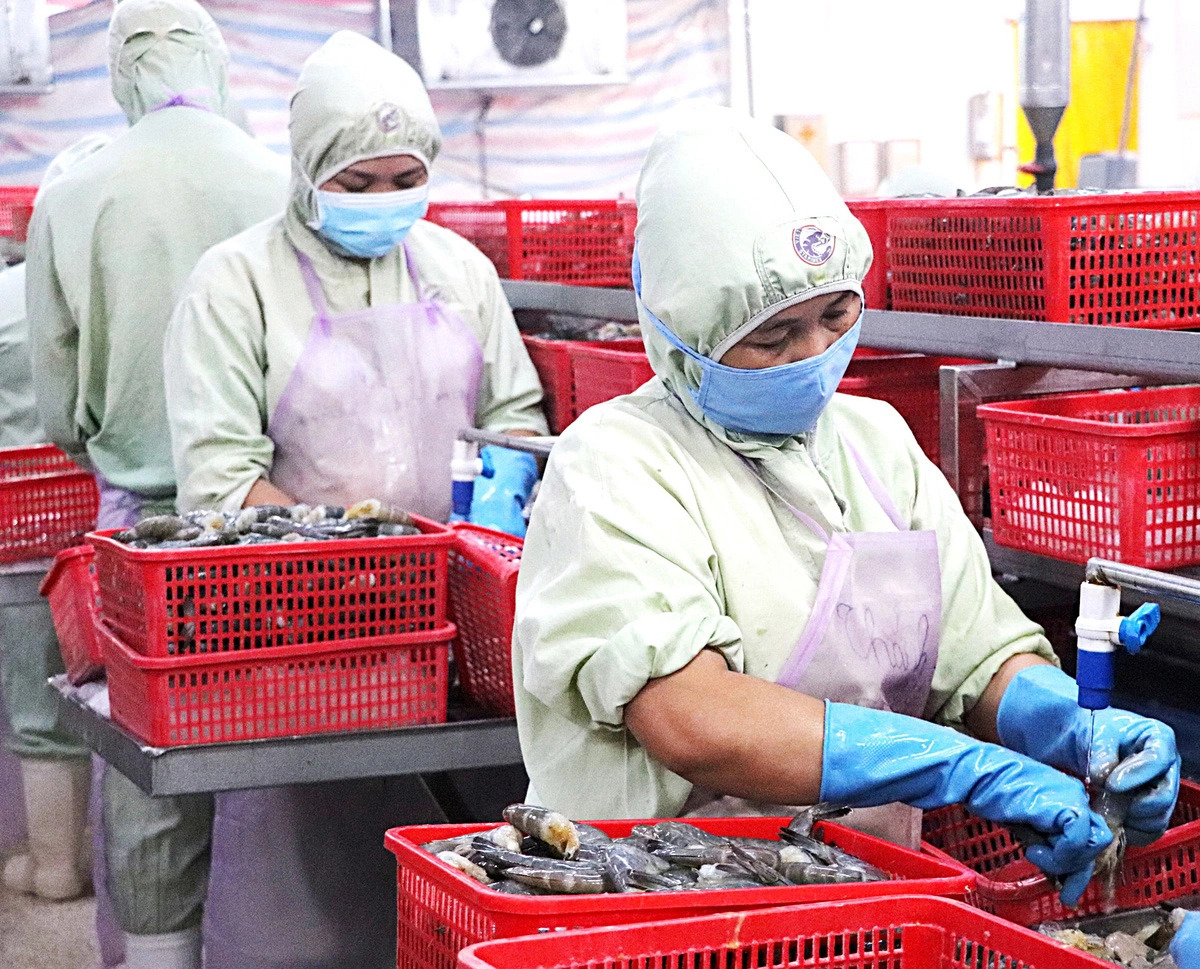Despite some challenges, Vietnam’s shrimp exports will continue to steadily increase and the nation is on track to fulfill its annual export target of US$4 billion, according to an expert in the local shrimp sector.
In a recent article for Tuoi Tre (Youth) newspaper, Dr. Ho Quoc Luc, chairman of southern Soc Trang Province-based Sao Ta Foods JSC, affirmed that the target is within reach given this year's stable growth.
From January to October, Vietnam’s shrimp exports brought in $3.2 billion, an increase of 13 percent from 2023, he said.
According to the Vietnam Association of Seafood Exporters and Producers (VASEP), shrimp exporters earned a turnover of $394 million last month, up 24 percent compared to 2023, with shipments to all the country's key markets recording double-digit growth.
Dr. Luc stated that the sector now has many opportunities to penetrate further into the international market, including the U.S., one of the top shrimp importers from Vietnam.
These opportunities stem from many free trade agreements (FTAs) combined with Vietnamese exporters' increasing level of shrimp processing.
Recently, the U.S. Department of Commerce released an announcement on countervailing duty rates imposed on shrimp imports.
Accordingly, Vietnamese shrimp is subject to a 2.84-percent duty, lower than other countries including India (5.77 percent) and Ecuador (3.78 percent).
Following this announcement, the U.S. International Trade Commission will issue a final judgment on such countervailing duty rates on December 5.
The final approved rates will be officially applied from December 12.
Dr. Luc pointed out that while Vietnam has gained advantages in the industry, challenges remain in the domestic shrimp sector.
One challenge is that 30-40 percent of shrimp farms have been impacted by bacterial infection, coupled with a poor water source.
This contagion caused commercial shrimp output to halt, resulting in shrimp prices skyrocketing to $1.5 per kilogram, higher than those charged by Vietnam's main competitors India and Ecuador.
In the 2010-15 period, shrimp breeders bought insurance for their farms but after a prolonged mass loss of products, insurance firms will no longer provide insurance service.
Dr. Luc encouraged shrimp farmers to determine the exact reason for the infection, discussing two scenarios.
If shrimp die 60 days or more after breeding, farmers should check their water sources for potential issues.
If shrimp die within the first 30 days, they should investigate whether a pathogen that previously affected the shrimp might be the cause.
Dr. Luc advised that large-scale shrimp farms meet required standards, with farms covering up to 100 hectares, to ensure stable and high-quality production.
He warned of challenges in taking full advantage of FTAs as they demand strict compliance with standards, while global events can influence their benefits.
For example, he said, shrimp exported to the European Union must comply with the EU's stringent standards set forth in the Vietnam-EU Free Trade Agreement.
Farmers must meet these requirements to access the incentives offered by such pacts.
Even if shrimp farmers comply with all the necessary rules and standards, these incentives hinge on global political, diplomatic, and economic conditions, meaning factors outside the farmers' control can influence whether they are able to fully benefit from these tax breaks.
Dr. Luc also proposed that authorities should enforce policies that encourage investing in shrimp breeding and launch a program for ‘greening' the shrimp industry to meet relevant standards.
Like us on Facebook or follow us on Twitter to get the latest news about Vietnam!




















































